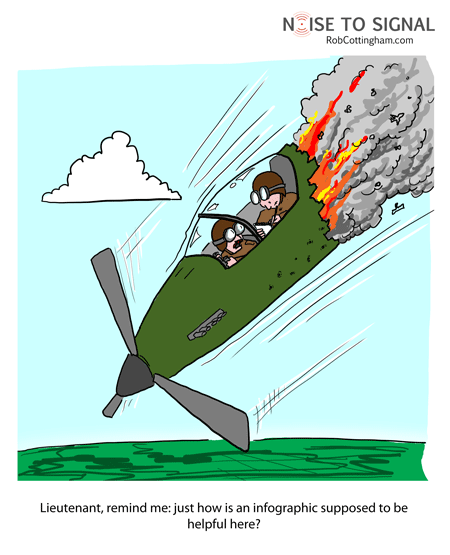Where the hell did all the infographics come from, anyway?
One moment they’re relegated to the pages of USA Today, enlightening people about such burning issues as How is America getting to the mall today? (private auto, 57%; public transportation, 25%; foot or bicycle, 12%; part of a marauding mob of looters, 4%; taxi, 2%).
The next, they’re everywhere. (Followed immediately by a flood of “Why your brand needs to use infographics NOW or face the boiling wrath of empowered customers” blog posts.)
And of course, hand in hand with the infographic is its evil counterpart, the pseudoinfographic. You can identify a pseudoinfographic through several distinguishing features:
- The word “infographic” appears prominently on it, often more than once.
- The images don’t add any additional information.
- Oh, look – there’s the word “infographic” again on the bottom.
Why the sudden rise of infographics? Have Edward Tufte and his followers encoded some form of subliminal infographic indoctrination into their now-ubiquitous data visualizations? Has the rise of online video challenged static text to come up with new, more engaging forms? Or is our collective unconsciousness making a last, desperate attempt to save the tl;dr crowd from its own impatience?
Whatever the reason, it seems the answer to every communications challenge at the moment is “Create an infographic!”
Fortunately, there are some great ones out there. The best of them actually do fill a need, illustrating information visually and making complex ideas easier to grapple with. (Please, feel free to share your favourites in the comments!)

